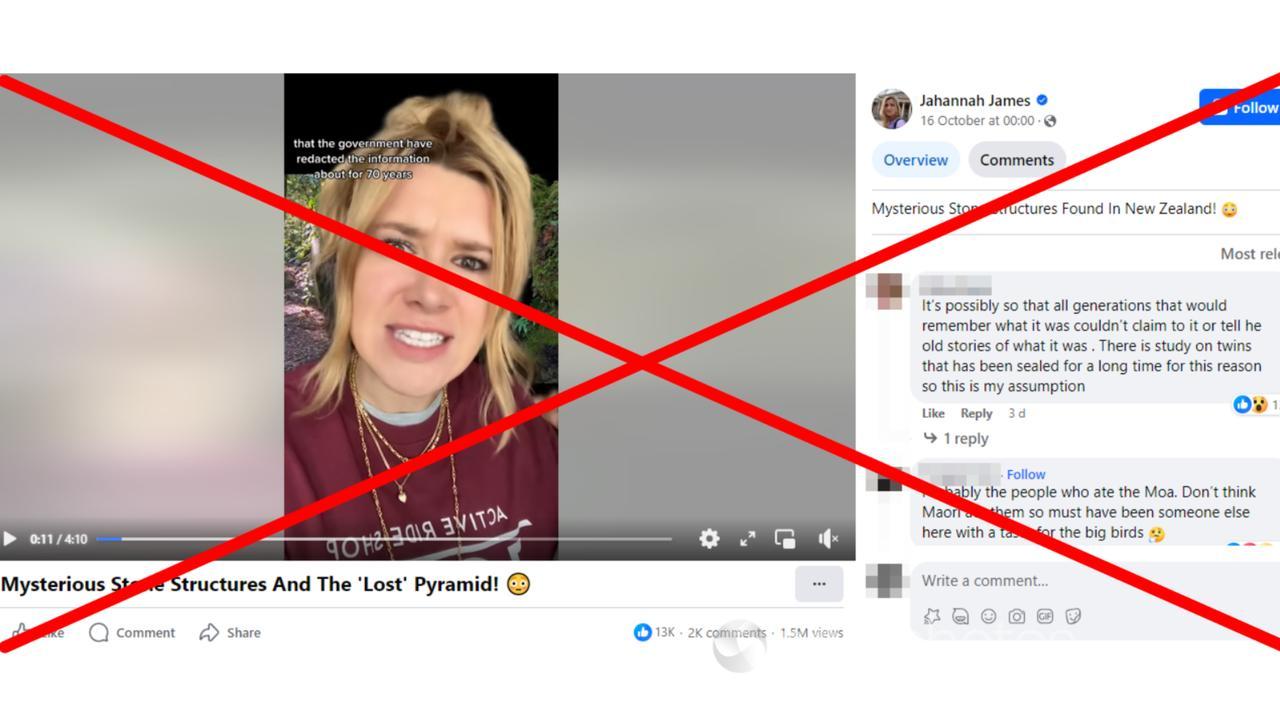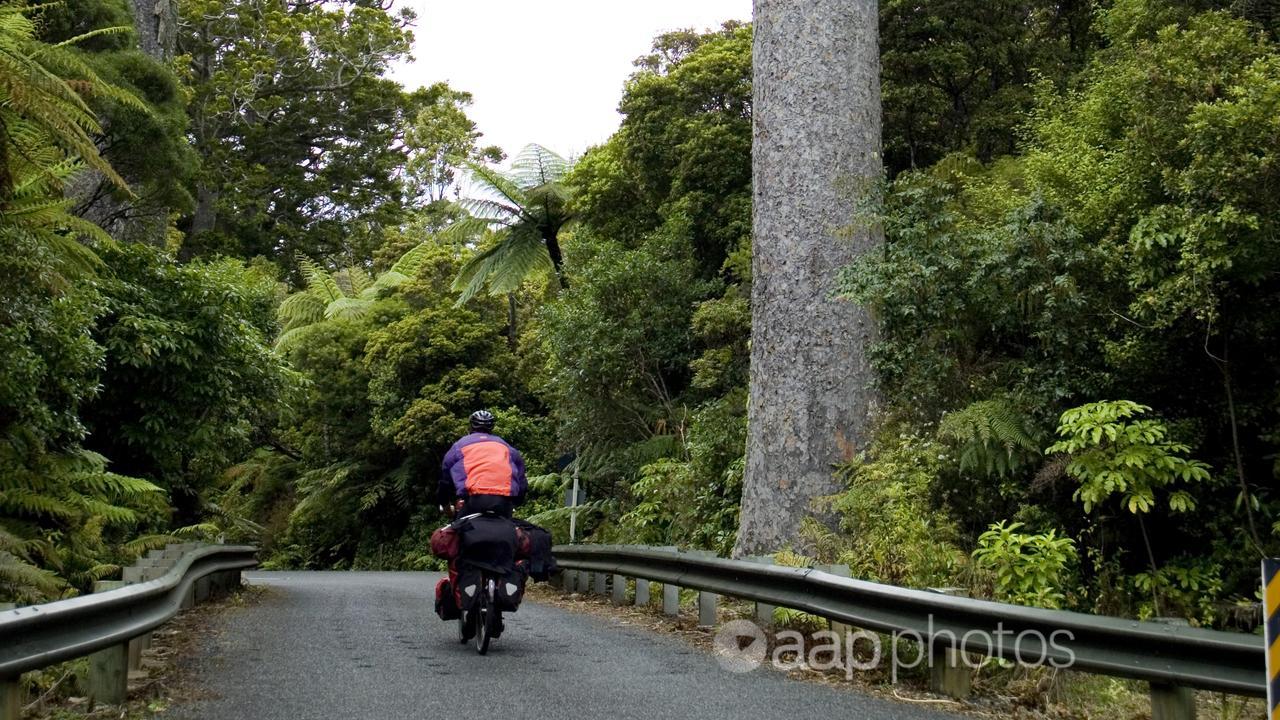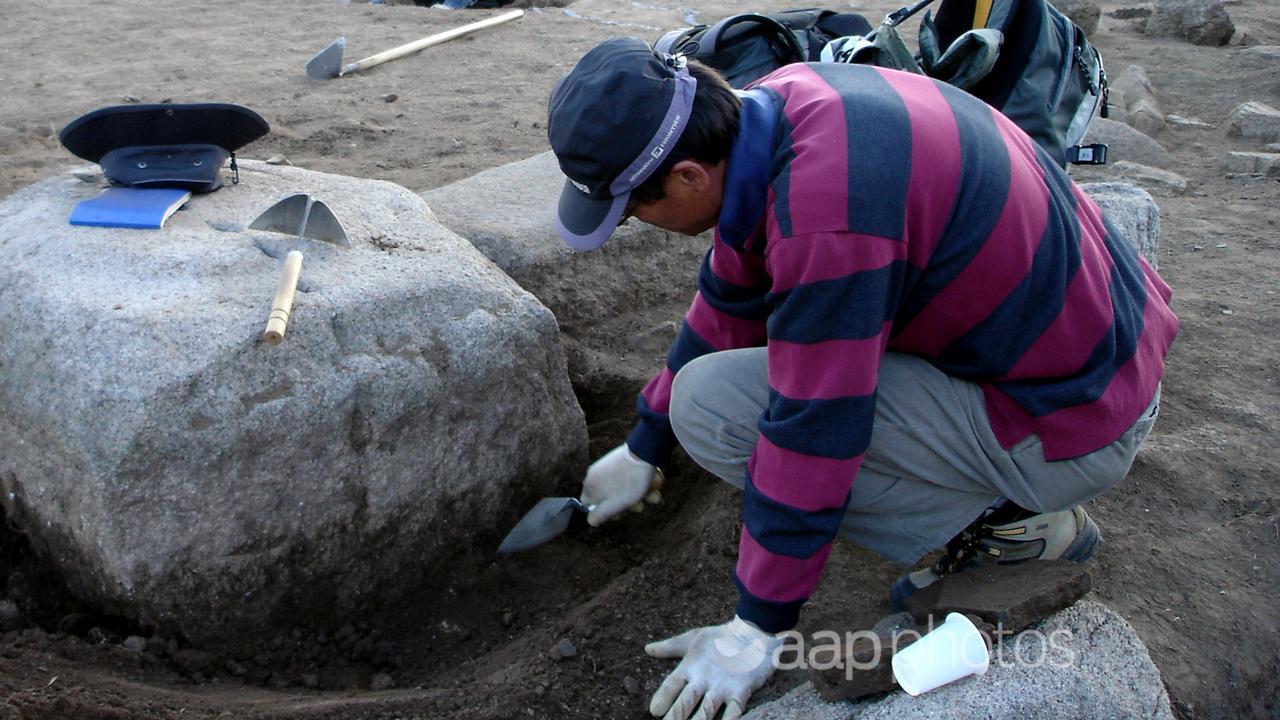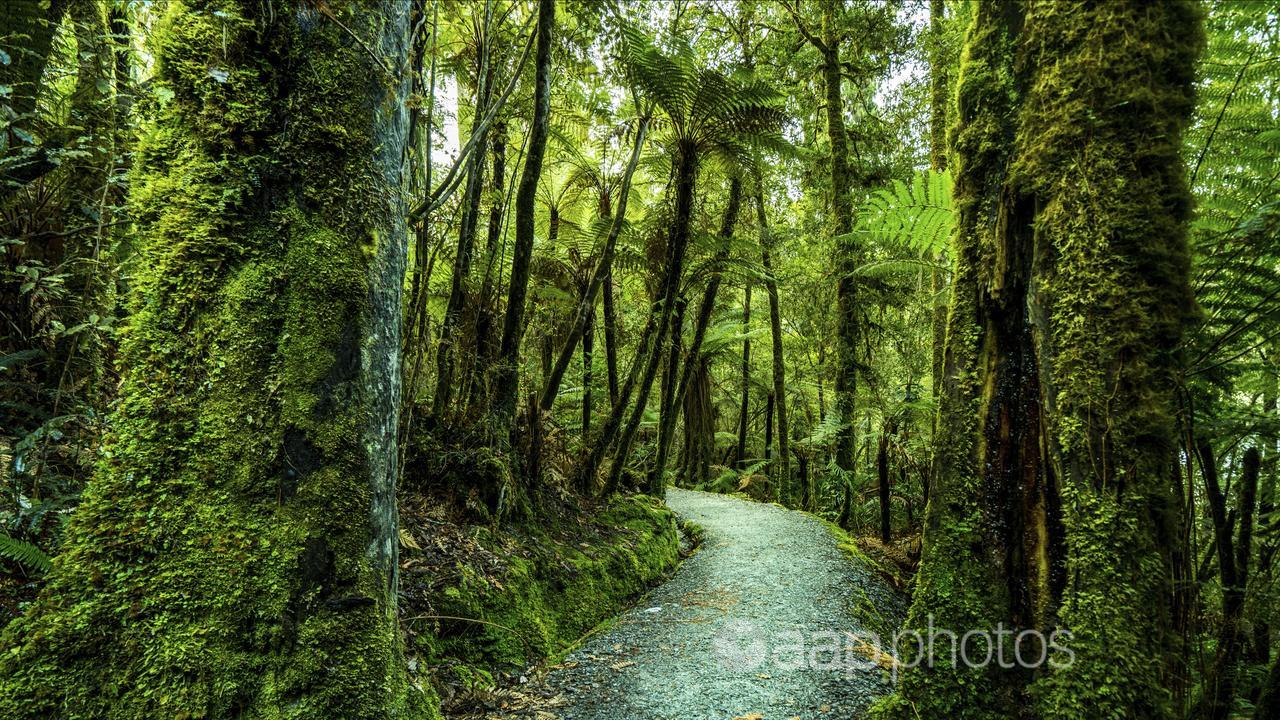A social media video with more than 1.5 million views is resurrecting myths about a New Zealand archaeological site, claiming a 75-year embargo may hide evidence of pre-Maori settlement.
This is false. The embargoed Waipoua Forest research was lifted almost three decades ago and all documents are publicly available.
The archaeologist who conducted the work told AAP FactCheck there was no evidence of a pre-Maori community.
The claim was made in a Facebook video on October 16.
At the start of the video, the presenter refers to mysterious structures which “the government have redacted the information about” for 75 years.
“In the Waipoua Forest of New Zealand … they found these amazing stone structures, man-made, in the middle of the forest,” she says.
“Obviously everything’s overgrown around it … it is super old … however, the information about the site and the dating, it’s all been redacted, it’s not disclosed to the public. And the file has been sealed until 2063.”

Waipoua Forest, on NZ’s North Island, has a long history of Maori occupation with the local Te Roroa people.
Archaeological work on some 40 sites in the Waipoua region dates back to the 1970s.
In 1988, NZ archaeologist Michael Taylor signed an archive transfer agreement for 14 pages of records related to the site to be entered in the National Archives, with the request they be restricted until 2063.
The video’s presenter shows the document in her video.
“Some people speculate the site could be Maori, but weirdly this forest is on public land and the government have done nothing to protect it, which is weird considering they do a lot of protection for their Indigenous culture in New Zealand – so if it’s not Maori, who is it?” she says (video mark 1min 16sec).
This comment plays into an old myth there were inhabitants of New Zealand before Maori, which AAP FactCheck has previously debunked.
The claim there’s evidence in Waipoua Forest pointing to pre-Maori inhabitants is not new. It was the subject of a Facebook post in 2014. It is also mentioned in this Spinoff article, and this NZ Herald article.
Both articles reference the book Ancient Celtic New Zealand by Martin Doutré, ” a former Mormon missionary turned self-proclaimed ‘astro-archaeologist’.”

Doutré doubles down on the Waipoua Forest myth linked to the embargoed documents on his website, where he reveals the embargo was lifted in 1996.
He also shares a letter dated January 25, 2000, from the National Archives referring to the “14 sheets” Mr Taylor deposited in 1988.
“The 14 sheets you mention have constantly been misrepresented as some kind of report,” the letter states.
“They were in fact Mr Taylor’s handwritten list of the records deposited here in 1988 … There are no access restrictions.”
The Department of Conservation confirmed to AAP FactCheck there were no access restrictions to the Waipoua Forest archaeological site documents.
They are accessible here, including reports Mr Taylor submitted in 1988, such as here and here.
Mr Taylor told AAP FactCheck the documents were “primarily field notes and related field records and incomplete drafts of reports”.
On the claims of a mysterious 14-page report, he added: “This I understand is actually a list of the material that was originally deposited in archives. There is no 14-page archaeological report that I am aware of.
“I can assure you that there is nothing in any of the records that point to Celts, Vikings, Spanish, Phoenicians, Chinese, Martians or any other group or pre-Maori people being present in Waipoua or anywhere else in New Zealand.”
On the video’s claim that information about dating from the site was restricted, Mr Taylor said radiocarbon dates at Waipoua were free to access on the NZ Radiocarbon Database.

As to the reason for the embargo request in 1988, reality is more mundane than a government cover-up.
“At that stage (the Department of Conservation) was consolidating and my job was lost and iwi (Te Roroa community) wanted the information to not be lost, and as my field notes contained some personal and family information they did not at that stage want it to be open to anyone,” Mr Taylor said.
“When a limitation on access was requested at National Archives, the archivist … said a 75-year restriction was the standard thing, so we simply agreed with their recommendation.”
On the video’s claim the site is on unprotected public land, Mr Taylor said it is private pine forest with public access restricted.
The Verdict
The claim a 75-year embargo of archaeological records could be hiding evidence of a pre-Maori settlement in New Zealand is false.
The embargo on records from the Waipoua Forest archaeological work was lifted in 1996.
The restrictions initially imposed in 1988 had nothing to do with evidence of pre-Maori settlement, but was requested by the local community so records would not be lost.
False — The claim is inaccurate.
AAP FactCheck is an accredited member of the International Fact-Checking Network. To keep up with our latest fact checks, follow us on Facebook, Twitter and Instagram.
All information, text and images included on the AAP Websites is for personal use only and may not be re-written, copied, re-sold or re-distributed, framed, linked, shared onto social media or otherwise used whether for compensation of any kind or not, unless you have the prior written permission of AAP. For more information, please refer to our standard terms and conditions.


















